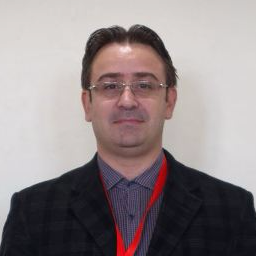Advances in Ultrasound Chemistry
A special issue of Molecules (ISSN 1420-3049). This special issue belongs to the section "Ultrasound Chemistry".
Deadline for manuscript submissions: closed (28 February 2023) | Viewed by 22986
Special Issue Editors
Interests: diazines; medicinal chemistry; anticancer; antituberculosis; microwave; ultrasounds; organic synthesis
Special Issues, Collections and Topics in MDPI journals
Interests: diazoles; medicinal chemistry; anticancer; antituberculosis; ultrasounds; microwave; organic synthesis
Special Issues, Collections and Topics in MDPI journals
Special Issue Information
Dear Colleagues,
Within the last few decades, ultrasound (US)-assisted reactions have become a widely used and powerful method in organic chemistry synthesis, offering some important advantages, such as significantly faster reaction times, milder conditions, increased yield and selectivity, lower costs, and simplicity in handling and processing. Moreover, in recent years, this method combined with other unconventional methods (microwave (MW)) seems to bring new advantages in terms of the synthetic approach. Taking into consideration the advantages offered by US irradiation in terms of energy consumption diminution, these reactions could be considered environmentally friendly.
The aim of this Special Issue is to provide a platform to present the latest developments in US-assisted reactions in organic chemistry, focused on the synthesis of (but not only) biologically active heterocycle derivatives.
Dr. Gheorghita Zbancioc
Prof. Dr. Costel Moldoveanu
Guest Editors
Manuscript Submission Information
Manuscripts should be submitted online at www.mdpi.com by registering and logging in to this website. Once you are registered, click here to go to the submission form. Manuscripts can be submitted until the deadline. All submissions that pass pre-check are peer-reviewed. Accepted papers will be published continuously in the journal (as soon as accepted) and will be listed together on the special issue website. Research articles, review articles as well as short communications are invited. For planned papers, a title and short abstract (about 100 words) can be sent to the Editorial Office for announcement on this website.
Submitted manuscripts should not have been published previously, nor be under consideration for publication elsewhere (except conference proceedings papers). All manuscripts are thoroughly refereed through a single-blind peer-review process. A guide for authors and other relevant information for submission of manuscripts is available on the Instructions for Authors page. Molecules is an international peer-reviewed open access semimonthly journal published by MDPI.
Please visit the Instructions for Authors page before submitting a manuscript. The Article Processing Charge (APC) for publication in this open access journal is 2700 CHF (Swiss Francs). Submitted papers should be well formatted and use good English. Authors may use MDPI's English editing service prior to publication or during author revisions.
Keywords
- ultrasound
- ultrasound and microwaves
- organic synthesis
- heterocycles
- cycloadditions
- anticancer
- antituberculosis
- antimicrobials
- anti-HIV
- other biological activities
- fluorescent derivatives







